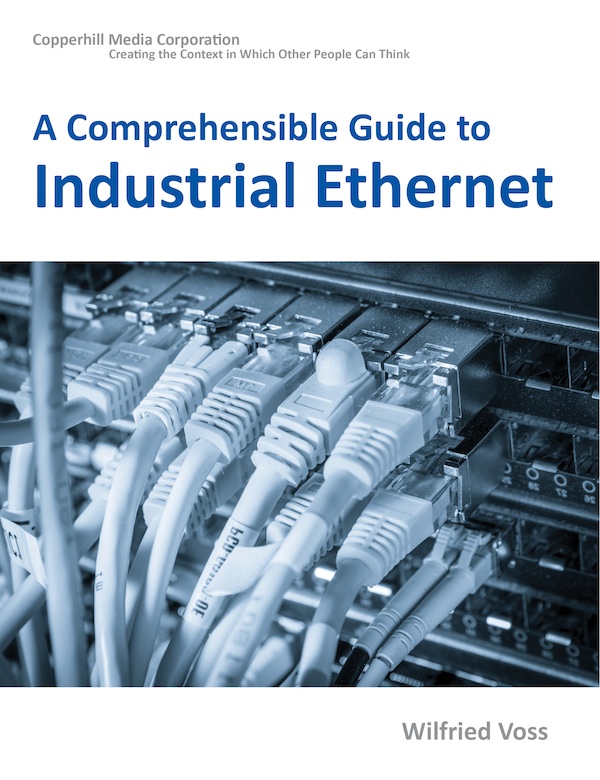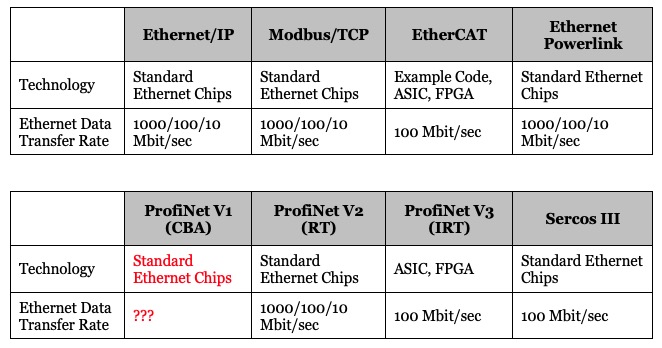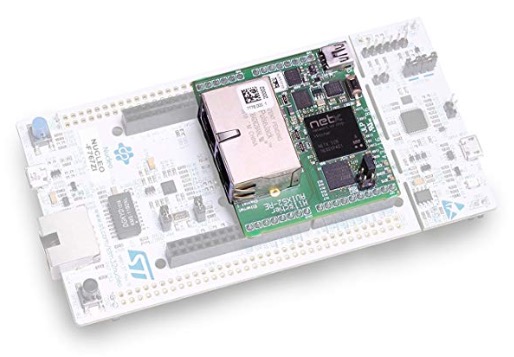Recent Posts
Industrial Ethernet Guide - Technology and Performance Features
Posted by on

The following is part of A Comprehensible Guide to Industrial Ethernet by Wilfried Voss.
The following information has been compiled with the best of intentions. However, as I have pointed out frequently, a fair and complete comparison of Industrial Ethernet Protocols is challenging.
Furthermore, specifications and organizational features may have changed since the time of this writing.
I have marked some parameters in red, indicating that the information was either not available or may not be entirely correct (This is especially true regarding the Profinet protocol; Siemens maintains their reputation of providing complex technologies with cryptic documentation).
Please feel free to contact me in case you find an error or when clarification is needed.

EtherCAT, Sercos III, and ProfiNet V3 (IRT) are not immediately suitable for Gigabit Ethernet; they require redesign of the ASIC or FPGA.
Jitter
In terms of jitter, it is fair to state that EtherCAT, Ethernet Powerlink, and Sercos III give users a system with almost no jitter (less than 100 ns) at all times.
On Ethernet/IP networks, jitter can be considerably reduced with special IEEE 1588 extensions in all components. The exact jitter depends on the IEEE 1588 clock frequencies, but it can deliver synchronization accuracies of better than 500 nanoseconds.
Reduced jitter can also be achieved in ProfiNet IRT applications.
The use of Ethernet switches with their inherent latency times will increase jitter.
Cycle Time
A protocol’s cycle time can depend on several mostly application-specific factors (e.g., number of nodes in the network, use of Ethernet switches, etc.).
For instance, the Sercos III protocol supports cycle times from 31.25 microseconds to 65 milliseconds depending on the number of slave devices that need to be supported within one cycle.
Tests (See Excerimental Determination of Real Time Peer to Peer Communication Characteristics of EtherNet/IP) have determined that Ethernet/IP can support an “update interval” of only 8 milliseconds, which is consistent with other sources who determined the Modbus/TCP (which is also based on standard Ethernet TCP/IP) cycle time to be 5 to 10 milliseconds.
These cycle times are based on the current standard data transfer rate of 100 Mbit/sec.
However, when changing the technical conditions, protocols like Ethernet/IP, Modbus/TCP, and Ethernet Powerlink would significantly improve their cycle time with Gigabit Ethernet while EtherCAT, Sercos III, and ProfiNet V3 (IRT) are not immediately suitable for Gigabit Ethernet.
netSHIELD"NSHIELD 52-RE" - Industrial Ethernet Development Platform
 netSHIELD is an evaluation expansion board with Arduino compatible connectors for development purposes.
netSHIELD is an evaluation expansion board with Arduino compatible connectors for development purposes.
It enables the user to connect a Microcontroller based application to all market relevant Real-Time-Ethernet industrial networks with best-in-class real-time capabilities, like PROFINET, Ethernet/IP, EtherCAT, and others.
The extension board features a netX 52 system-on-chip. The netX SoC architecture is designed from the ground up for the highest demands on flexibility, determinism, and performance in terms of multi-protocol capability and low latency for short cycle times. The heterogeneous multi-core architecture features an ARM processor core, coupled with a flexible communication subsystem (xC) for varieties of industrial applications support.
 Loading... Please wait...
Loading... Please wait...
